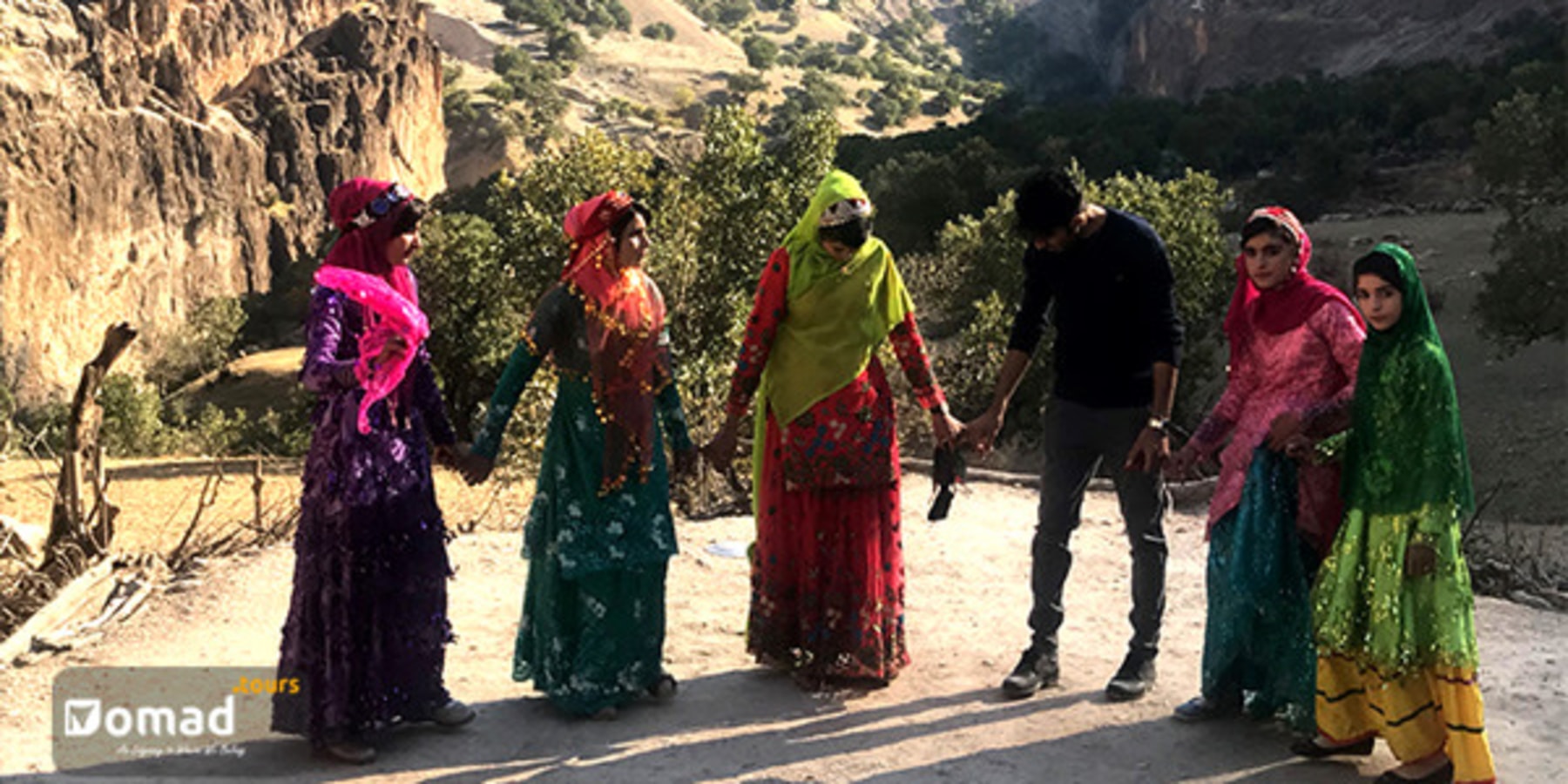
Since two years ago, I got to know more about our nomads. I got to know that Iran has the highest number of nomads in the world and these indigenous people still practice ‘transhumance’ in Mt. Zagros ranges. But, unfortunately, they are not as known as for example Mongolian nomads. So, when one of the nomads told us about her wedding party since I had never been in a nomadic wedding, I had no doubt I love to have a first-hand experience of a Bakhtiari nomads’ wedding.
On the Way to the Nomads’ Village
On a beautiful autumn day, when the days are shortened and the foliage turns to gold, we start our epic journey to magnificent Zagros mountain. To me, Zagros is quite inspiring and stands head and shoulders above the other mountains I have seen so far.
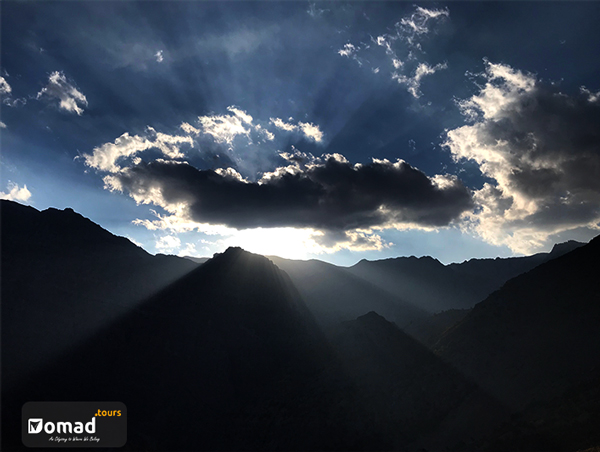
Mystic Sunset at Mt. Zagros
It is just three of us and the pristine nature of the area. We have the whole Zagros Mountainous area to ourselves, and the long, clear greenish-blue Bakhtiari River is running beside us all the way long. This sunset is a once-in-a-lifetime event and I’d never forgotten the mystic hue of the moment. These are moments to treasure – it is all tranquillity, fog over the mountain peaks, solitude, and the grandeur of the mountains.
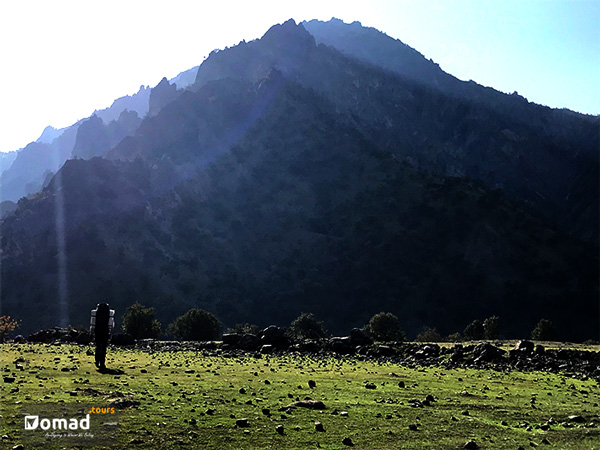
On my way to the wedding party
We have vast green pastures, mighty mountains, long fast-flowing river, and many springs with really delicious water on our way. In some valleys surrounded by the mountains, all we hear is the birds’ song.
On the first night, we stayed in a cozy house in a beautiful village. And then in the next morning, we set off on foot for the wedding party behind Zagros ranges.
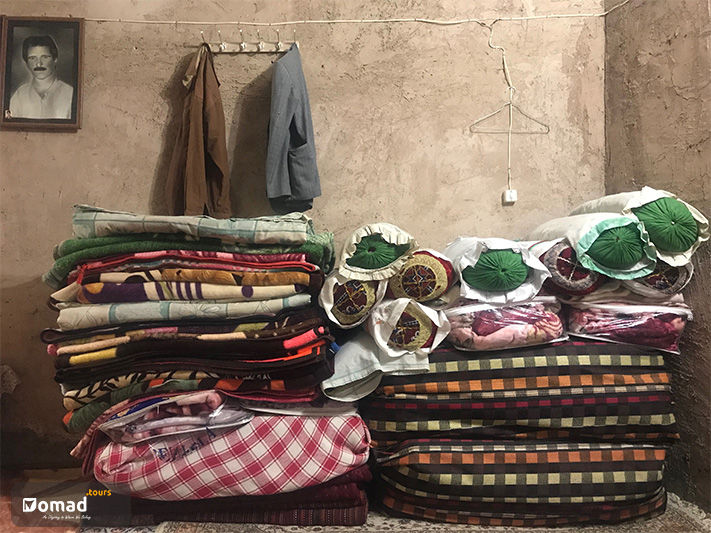
The cozy village house
Every now and then, we come across a nomad shepherding his herd of livestock. These nomads have a great knowledge of the area and its wild plants. They know the herbal remedies for the illnesses. The bride’s uncle is also accompanying us on the way to the wedding. Very often, he picks up a herb and chews it. He believes it is an anti-cancer herb.
This part of Zagros Mountain is also home to many picturesque pomegranate, berries and oak forests. In our short breaks, we sit by the trees eating the sour pomegranates. All day long, we are passing the trails used by the Bakhtiari nomads for thousands of years. These people are living an authentic nomadic life in one of the most beautiful hinterlands of Iran.
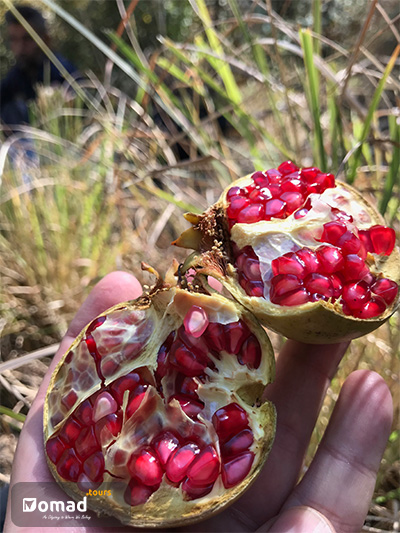
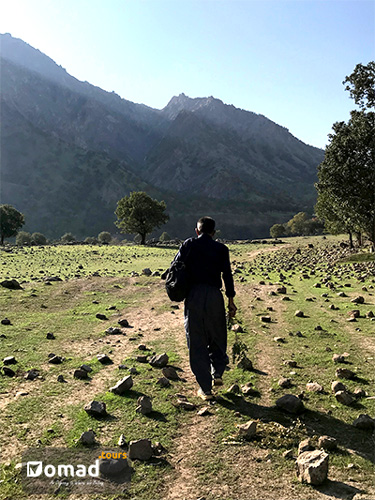
There is also a moving bridge on the river made by the nomads of Talogerd and Vark. It is made of stone, wood and wire cables and it makes it much easier for the nomads and now us to pass the river without climbing up for several hundred meters up.

Reaching Talogerd; Meeting the Bride’s Family
From above the last peak, we catch a glimpse of the village somewhere down the valley among the oak trees. Meanwhile, the nomad family is also seeing us, and begin to shoot their guns in the air. It is so common among the nomads to shoot their guns for their guests out of respect. The bride’s family is the only resident of the village.
The family welcomes us with open arms. They are also so surprised seeing us there. Although we’d told them we are coming, they couldn’t believe we’ve come such a long way. “I can’t believe my eyes seeing you here. How come you’ve taken the trouble to pass all these mountains to come to my wedding??” says Ashraf, the bride. Soon, they serve us with fresh tea made on the fire. The girls have all colourful dresses on and everybody is happy, greeting the others.

Again, we hear someone’s shooting; this time for the groom’s family who is coming down from the opposite mountain. This moment is one of the most memorable ones for me. The groom’s relatives who live in Pez village are getting close to the bride’s house and they are all singing and cheering.
The Wedding Ceremony
Lori Dance (Teshmal)
The main ceremony starts around noon when everybody is arrived and has been served with tea and confectionery. Then all young men and women gathered in the yard holding each other’s hand, the little finger and starts dancing a Lori dance. They know how to move their feet in a 3-step movement to the rhythm of the music. While dancing, to me they look tough and stern, and maybe it is the way with all the nomads; tough and at the same time kind and caring. I also join the dance with the bride and the groom’s moms while I have no clue how to move my feet or even my hands.
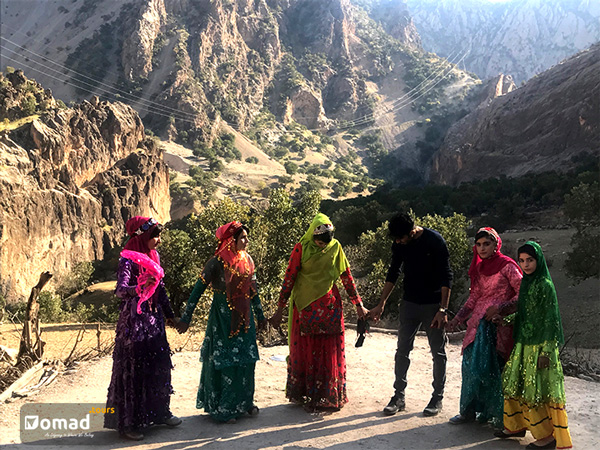
There is a boy whom everybody calls ‘Trump’. Why? Because he is blonde; different from other Bakhtiari nomads who have mostly dark hair and eyes.

Choob Bazi
It is very typical of the nomads to play a special game in their ceremonies called Choob Bazi (= playing with woods). All men gather in an area, then two of them stand in the center with two sticks of woods; one is attacking and the other one is defending with the woods they have in their hands. They are supposed to hit each other’s leg gently. While they are playing the game, they do listen to some epic Lori songs and the other men give them words of encouragement.
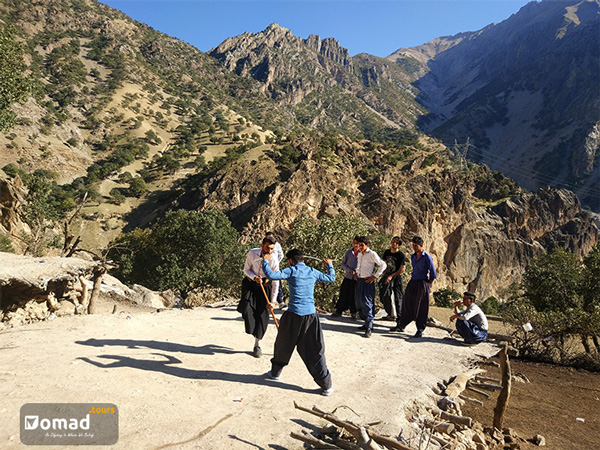
Making Tiri Bread
Another common activity among women is making nomadic bread for the ceremony. So, first they make two big pots of flour, and after kneading enough, they begin baking it. Since they need a large amount of bread both for lunch and dinner, two or three women take a turn making the bread.

Singing Traditional Lori Songs
Women are either dancing a Lori dance or singing traditional Lori songs. Again, they sit in a semi-circle and one of them sings the song and the others repeat some words that rhyme. One of the famous songs sung especially in wedding parties is ‘Ahay Goley’. ‘Gol’ means flower and in almost all Lori songs the word is used. This poem is about the bride and groom and their families. In each nomadic tribe, there are some women who know the songs by heart. In this ceremony, there is a woman called Bozorg. Although she is an illiterate woman, she knows so many songs and she has a really lovely voice. On their way to the bride’s house, and also during the wedding, she is singing beautiful happy songs for the bride and the groom.
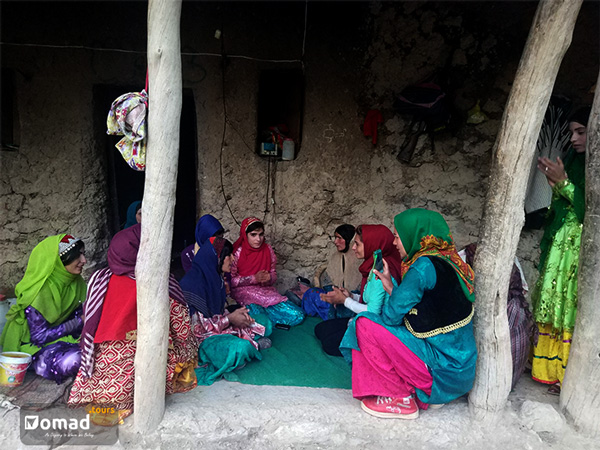
Taking Care of the Herd, Filling the Mashks
For a nomad, his herd of livestock is very important. Thus, no matter if it is a wedding day or a common day, he knows he needs to take care of his animals. Early in the morning, the sheep and goats are sent to surrounding pastures, and in the evening, they come back to their pen. Girls are in the pen helping the little ones find their moms.
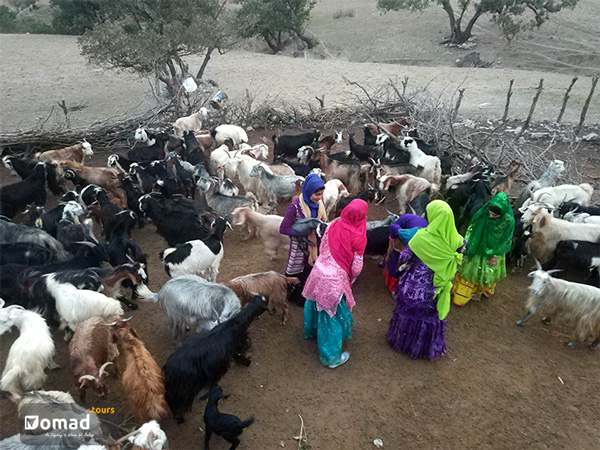 The nomads take care of the animals even at the wedding
The nomads take care of the animals even at the wedding
They also need fresh water from the springs. So, they need to fill the Mashks (= water containers made of goat’s hair) for the guests.
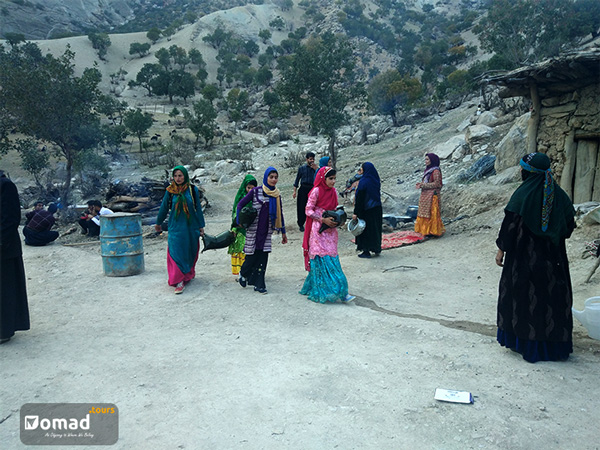
Wedding Meals
A goat or sheep is served for the ceremony. Mostly men are responsible for preparing the meal under the women’s supervision. Everybody has his/her own share of responsibilities, and both the bride and the groom’s families and relatives help with the work which needs to be done.
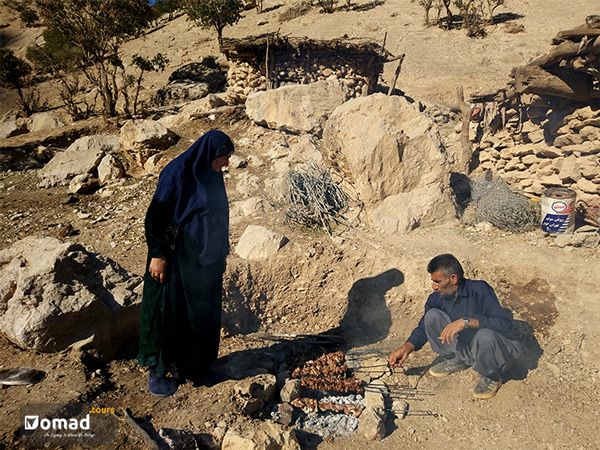
Talking about Shirbaha
The bride’s family provides the new couple with the dowry, and the groom’s family pays the bride’s family. But deciding how much they need to pay is the elderly’s responsibility. At night, after having dinner, the elderly get together in a room to talk about ‘Shirbaha’ while the young are having fun. When it is finalized, they write it down on a piece of paper and some of the guests sign it as witnesses to the marriage ceremony.
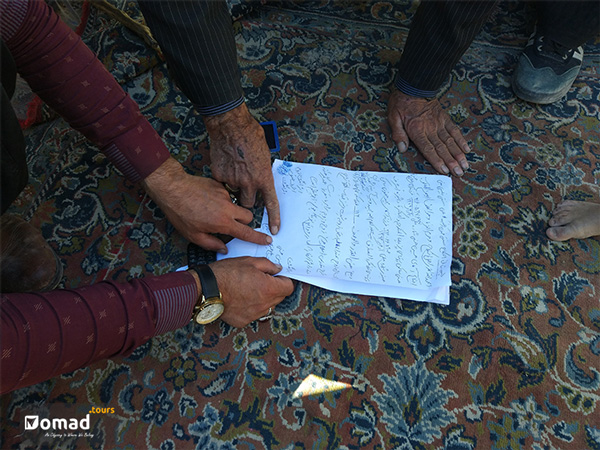
Henabandan
Another typical ceremony is Henabandan. All the women gather in the room, and the groom also joins them. There is a bowl of Hena on the old heater. A piece of Hena is put on the bride’s and the groom’s palm, and then they take each other’s hand as a sign of unity. The others also take a piece of hena to brings them good omen.
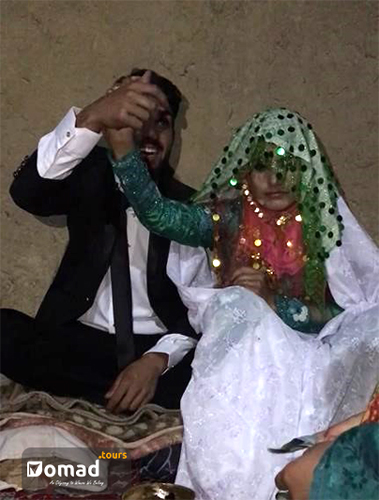
Registering the Marriage
Quite the opposite to what happens in cities, with nomads registering the marriage comes at the end. Thus, after all the ceremonies are done, they register the marriage. But there needs to be a clergyman to do it, and as there is no one in the mountain to do it; they call him so that he can ‘announce Ashraf and Hossain wife and husband’. They call him 3 times, but no antenna. They increase the altitude J, so they go to the roof and try it again. Yes, here they can call him. Finally, their marriage is registered somewhere close to the sky and the mighty mountain.
Fatherly Talks to the Bride
When the marriage is registered it’s time for the father or a father figure to give his daughter some advice regarding her new life. At this point, there is a shift in the mood of the family; a kind of mutual feeling. The bride’s side of the family is both happy and sad. Happy for the bride’s new life, and sad because she is no longer living with them. While the father is talking to her, Ashraf is crying quietly and gently. She knows she is going to miss her family especially her mom and her second sister to whom she is so attached. The father is also attaching a sum of money to her scarf which is another custom among the nomads. Then they come out of the room and circle the fire; another custom. Now, it is time to hand the bride to the groom.
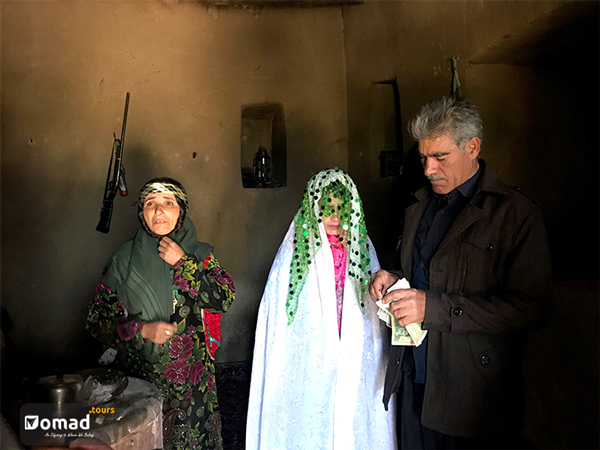
Towards a New Life in a New Village; Pez
We are all out. Some are packing the mules. The night before the Bride’s clothes were packed. The little ones who can’t do the hiking are also on the mules. The rest are on foot, ready to start the 5-hour hiking to the groom’s village. Bozorg is singing ‘Ahay Goley’ and the others are cheering.


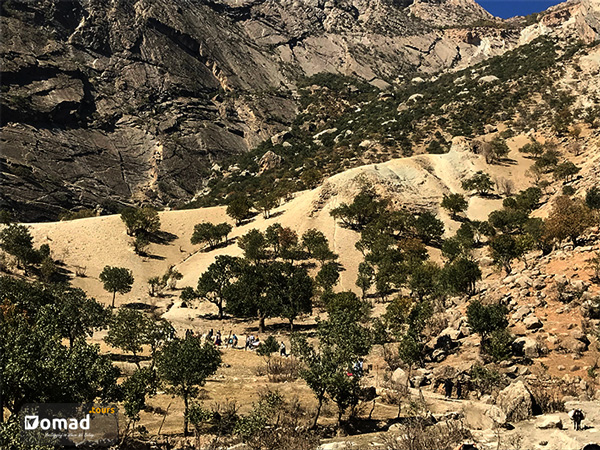

On Our Way Back to Tehran
Around noon, we get ready to say goodbye to our kind host. It is bittersweet to say goodbye to them, but we have to. On our way back to Dastgerd village, once again, I was mesmerized by the natural beauty of the region. I exactly remember all the emotions I felt when I saw the majestic river and mountains, Pirhadi shrine above one of the mountains, the nomads, etc. I wish I were there now.

